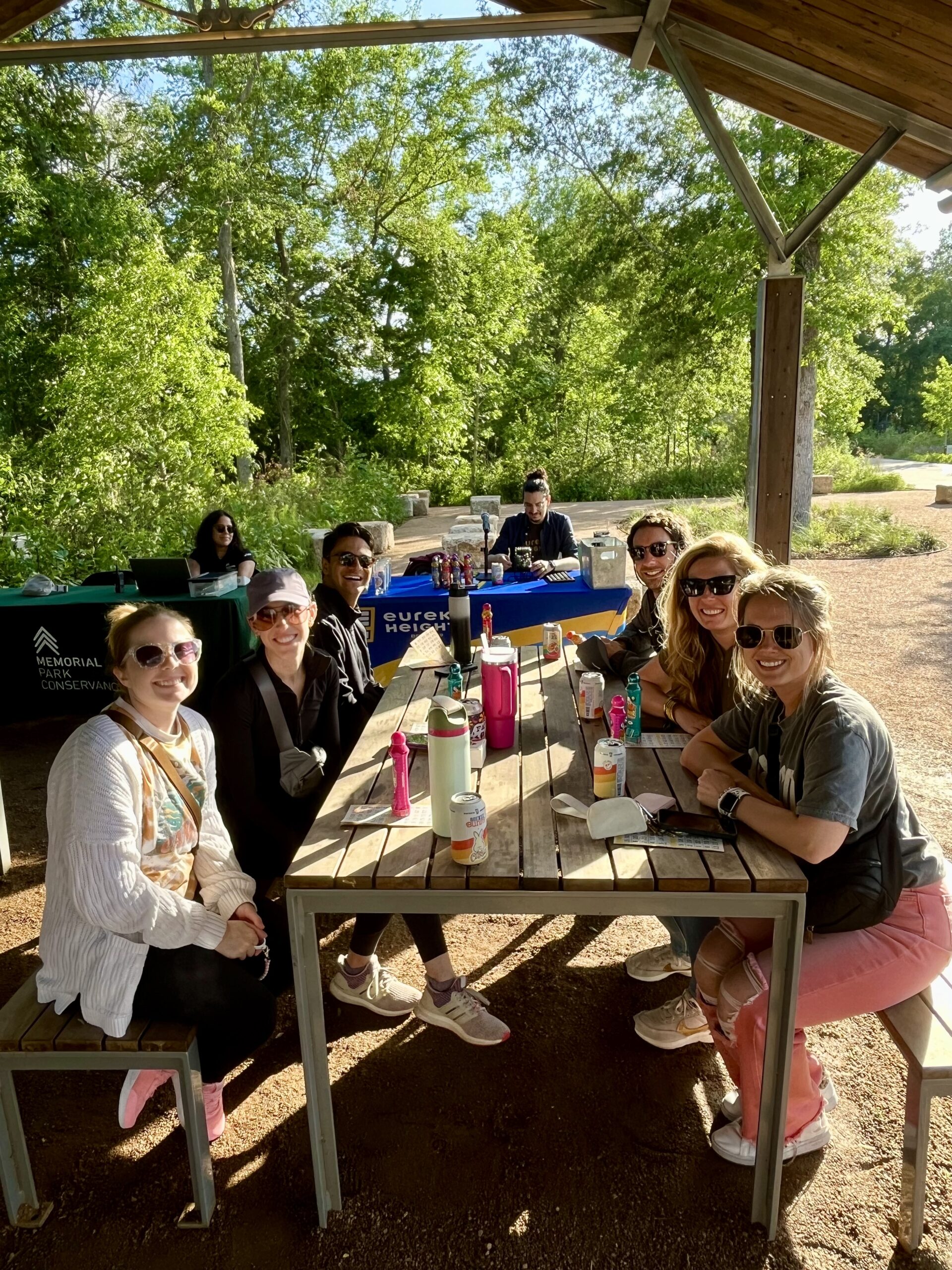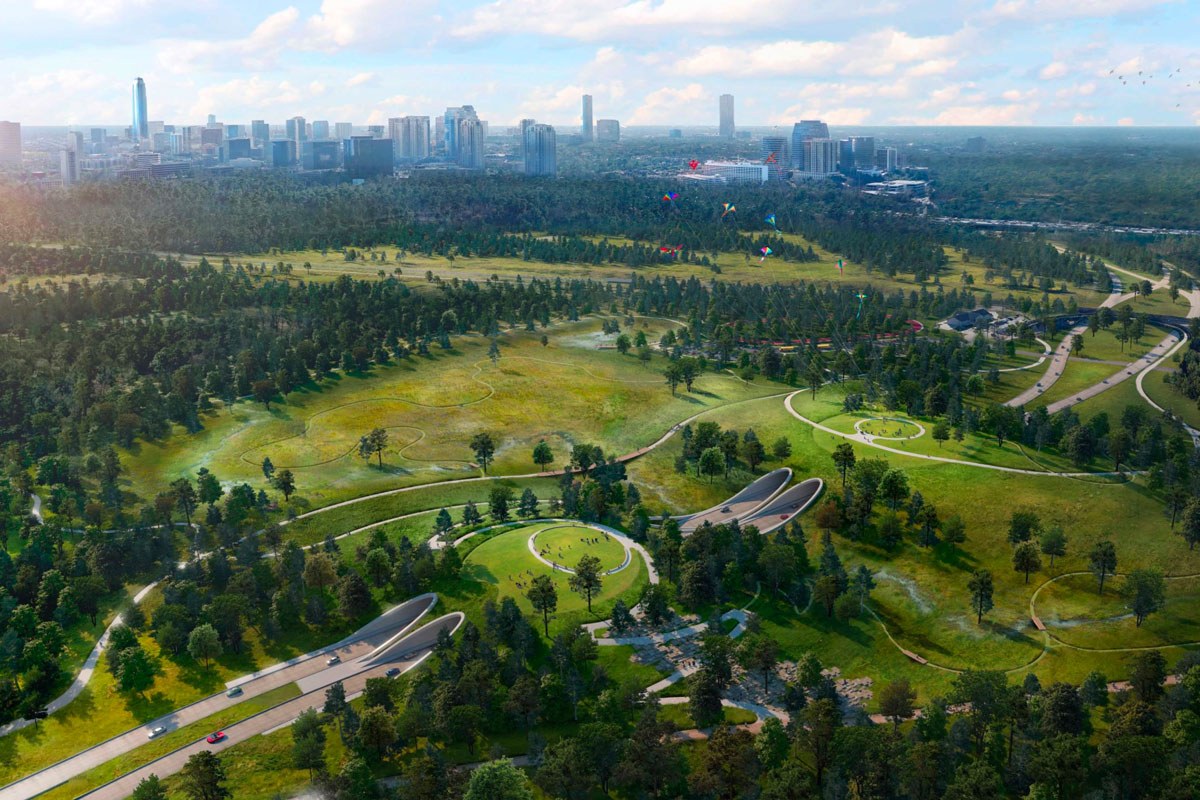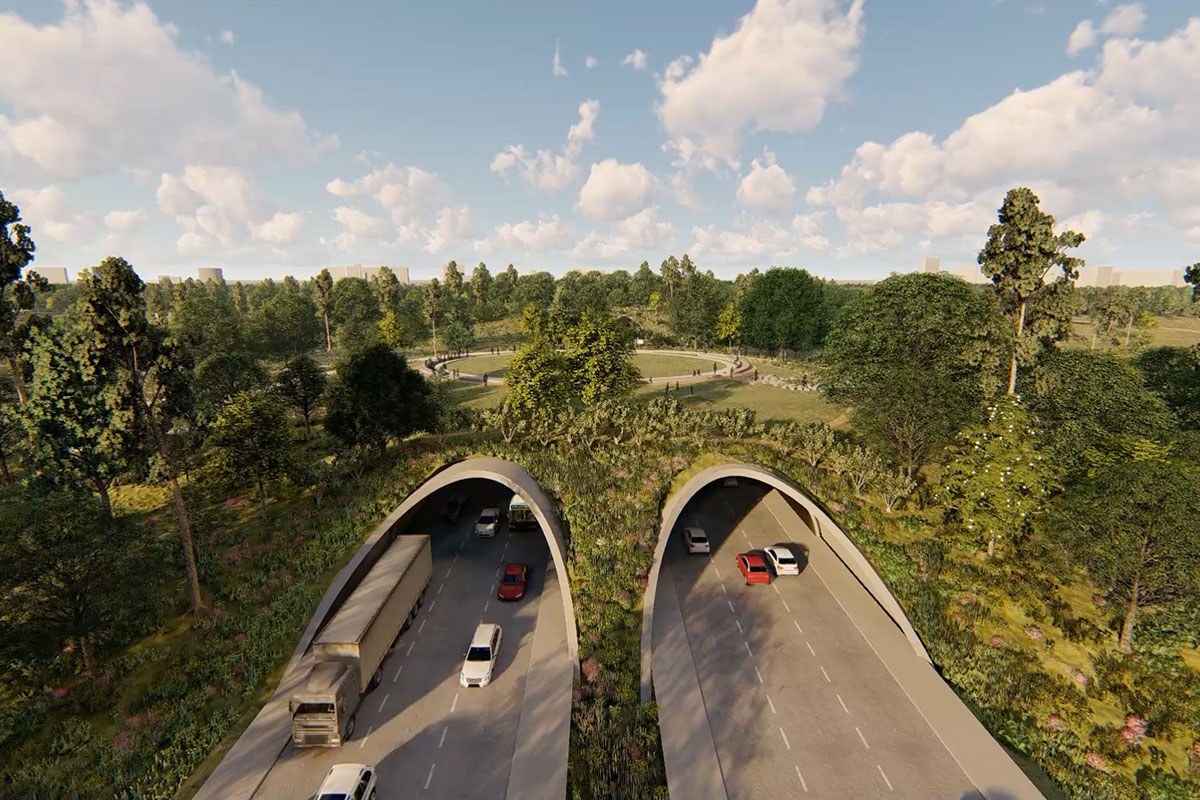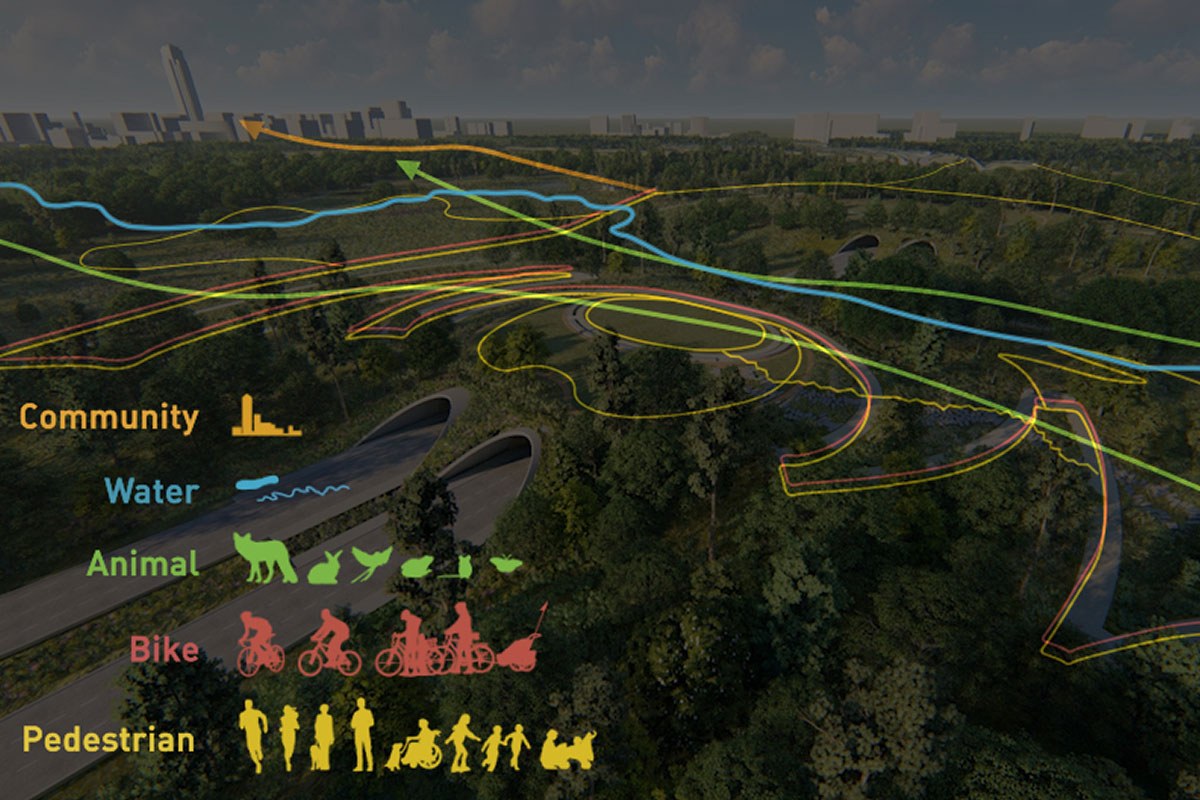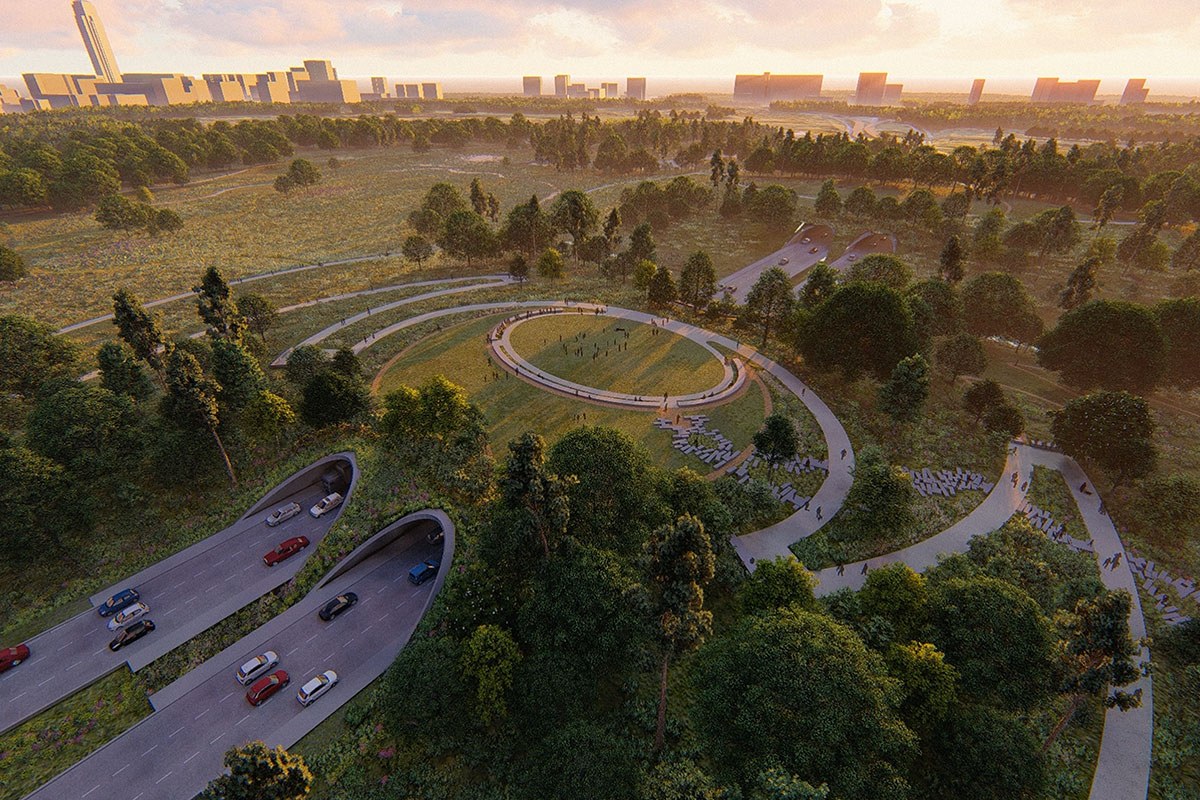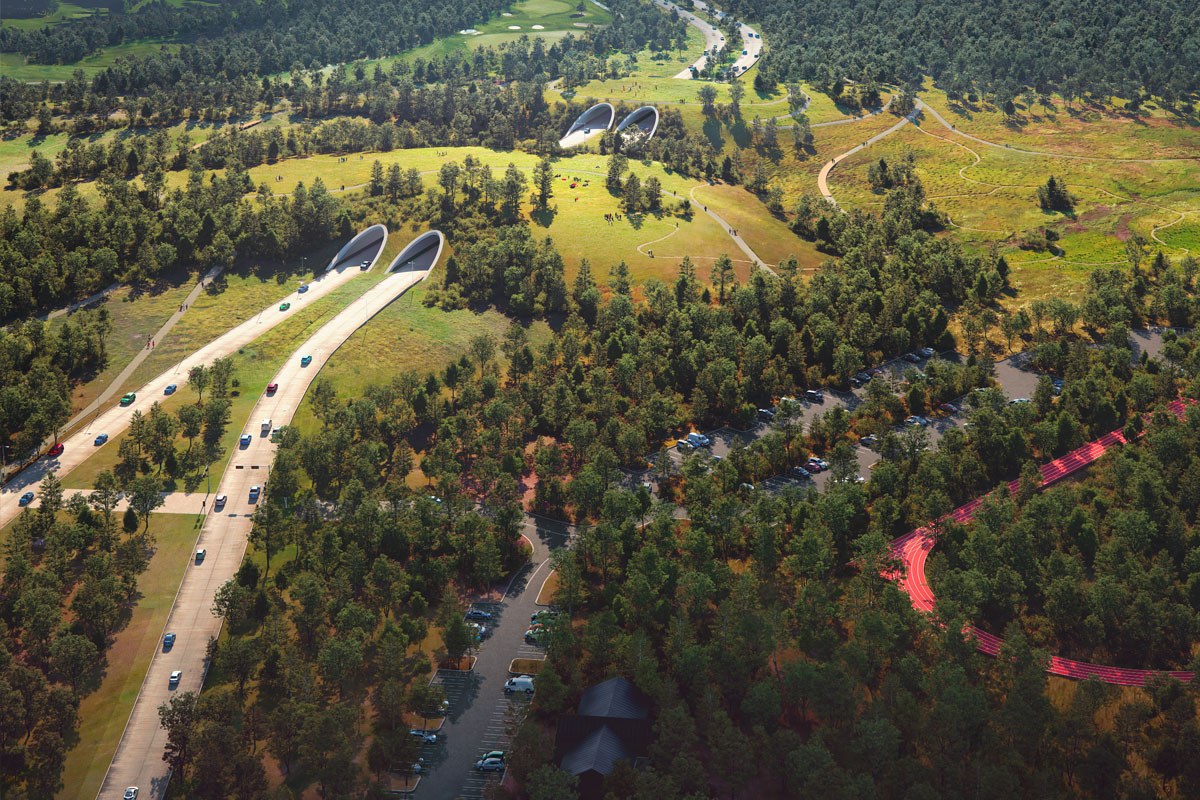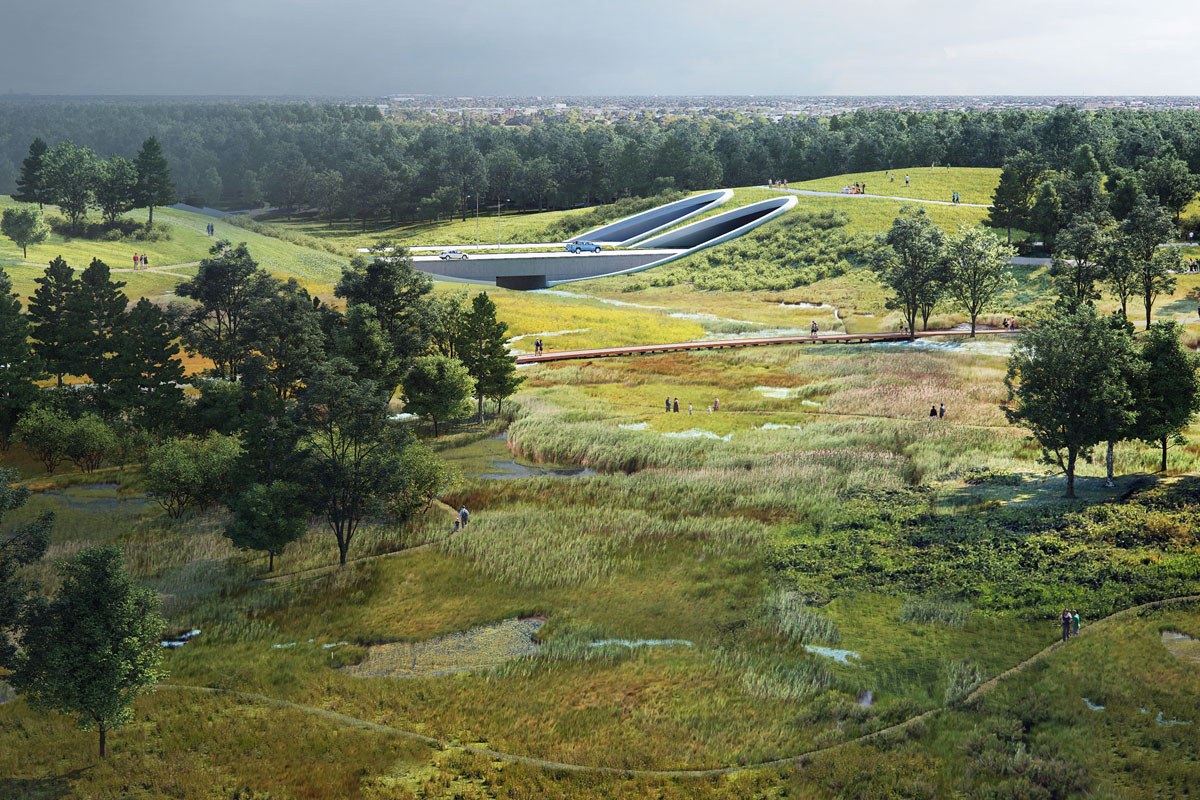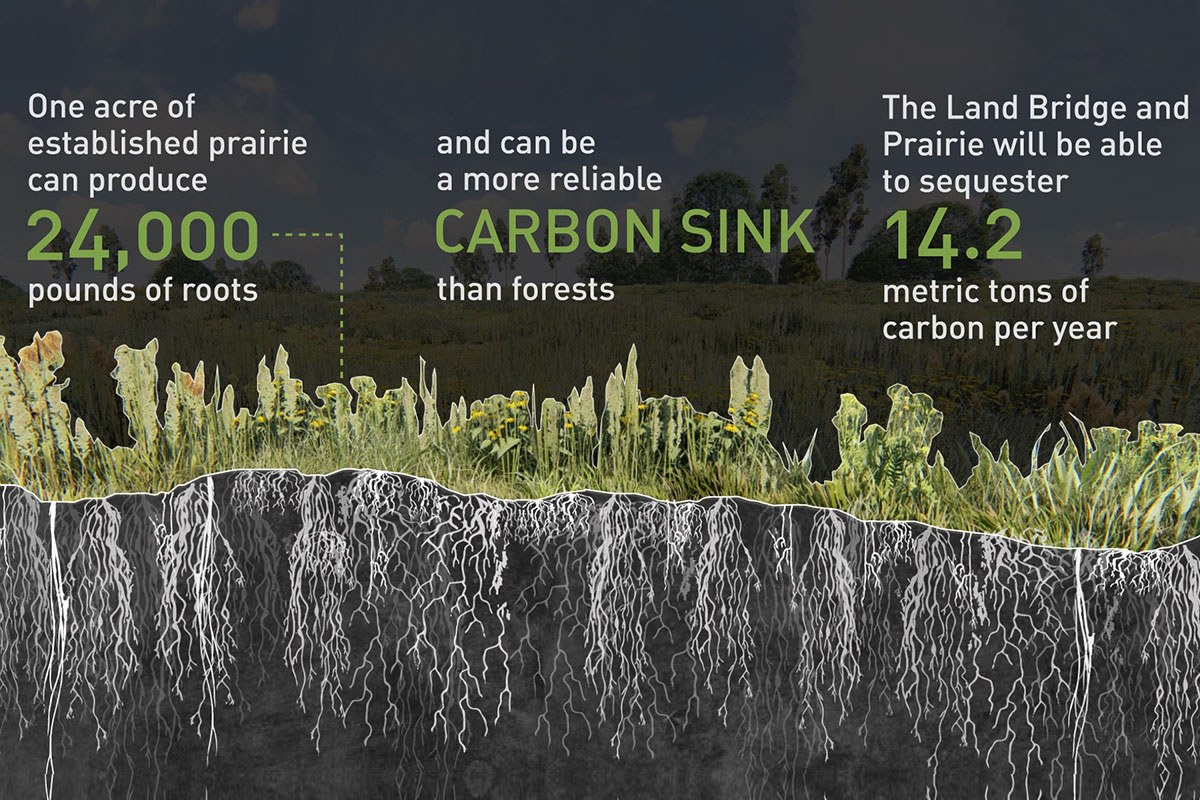Discover
Land Bridge and Prairie Project
The Land Bridge and Prairie project, coming to Memorial Park in early 2023, is the next major project of the Memorial Park Master Plan to be delivered, and is among the set of accelerated projects made possible by the Ten-Year Plan. This transformative, nearly 100-acre project will reunite the north and south sides of the Park by creating a land bridge over Memorial Drive to establish a dynamic new community space and enhance recreation opportunities for Park users.
The prairie restoration, which adjoins the Land Bridge, re-introduces endangered native Gulf Coast prairie and additional wetlands to areas north and south of Memorial Drive. A new network of trails will provide safe crossing for people and wildlife. Both prairie and wetlands serve important habitat and stormwater management functions and are a key part of the Park’s ecological restoration to ensure resiliency.
Together, the Land Bridge and Prairie will distinguish Memorial Park and Houston, serving as an icon to all of a greener and more resilient future. Information about the official opening celebration can be found here. Memorial Drive will remain open throughout the duration of the project.
To learn more, scroll down view a video and answers to FAQs about the Land Bridge and Prairie.
Land Bridge and Prairie FAQs:
What will this project accomplish?
Highlights and benefits of the Land Bridge and Prairie project include:
- Provides greater safety and connectivity: Swaths of greenspace on top of the Bridge will provide places to relax and enjoy new vistas of the Park and the city beyond, and will also serve as a hub for socializing and events. This “new” parkland is an innovative approach to green infrastructure, healing the divide cut by Memorial Drive through the middle of this treasured urban wilderness park half a century ago. Views from the crests of the Land Bridge will highlight the Park’s unique vantage point as an oasis of greenspace nestled between the urban skylines of downtown to the east and Uptown to the west.
- Restores nearly 45 acres of native coastal prairie: The Prairie, which will adjoin the Land Bridge to the north and the south, will re-introduce endangered native Gulf Coast prairie and additional wetlands. New walking and biking trails will expand the contiguous trail network available within the Park.
- Creates a new iconic destination for visitors: Together, the Land Bridge and Prairie will distinguish Memorial Park and Houston, serving as an icon for a greener and more resilient future. Memorial Drive will remain open throughout the duration of the project.
- Improves stormwater management: A restored network of native prairie and savanna ecologies will promote regional biodiversity of flora and fauna and act as a green sponge, helping to absorb and clean stormwater.
When will this project be undertaken?
Construction began in August 2020 and is slated for completion late 2022.
How will traffic be impacted during construction?
Memorial Drive will remain open during construction. Within the project area, traffic will be reduced from three lanes to two each way while a new section of Memorial Drive and the tunnel arch structures for the Land Bridge are completed directly south of the operating lanes. All lanes will reopen once construction is complete. A traffic study was commissioned to assess peak-hour commute times through the Park, and the construction plan is designed to minimize disruption.
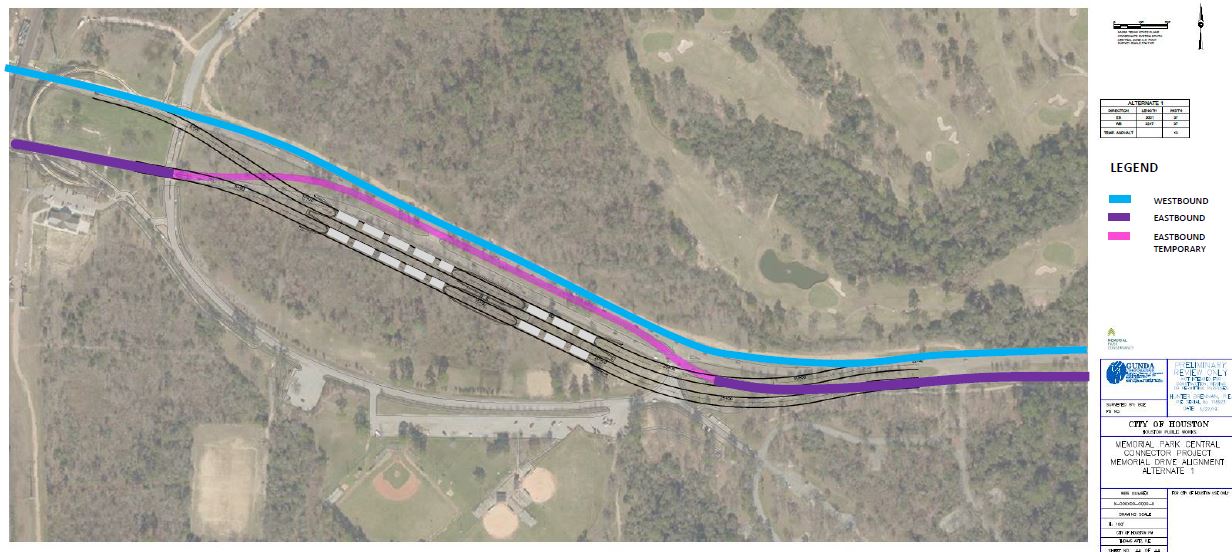
What does this project mean for the south-side trail system in the Park?
A new multi-use trail for people of all abilities will be incorporated along the south side of the Prairie and will connect to the adjacent existing south-side natural trail system. Ultimately, it will also connect to a future north/south hike-and-bike trail that will be developed along the CenterPoint easement adjacent to the railway line that will connect Memorial Park to Houston’s growing network of hike-and-bike trails. Bayou Wilds trails reconstruction is shown below. Click HERE to view our Memorial Park Trails Guide.
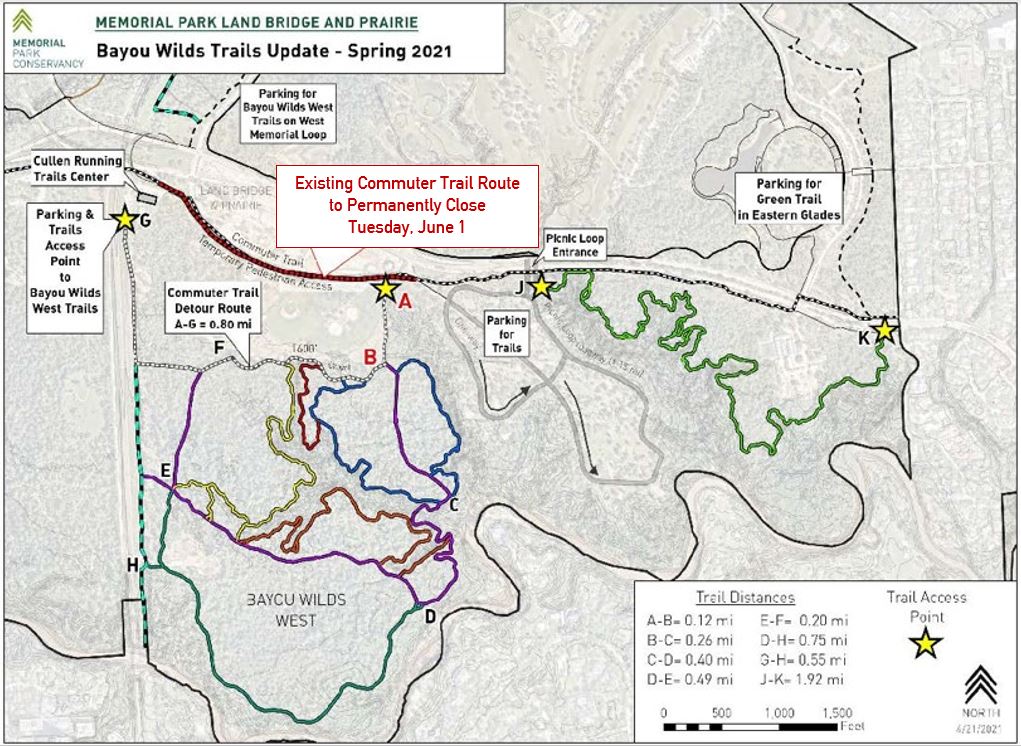
Will Memorial Drive be lowered?
No, Memorial Drive will remain at the same level. The arch structures for the Land Bridge will be built over the new section of Memorial Drive.
How will the existing Commuter Trail be modified by the project?
The Commuter Trail is the paved hike-and-bike trail that runs the length of Memorial Drive along the south side of the Park. The project will provide a dedicated multi-use trail along the south side of the Land Bridge between Picnic Loop and the Cullen Running Trails Center where it will then reconnect with the existing Commuter Trail. A temporary multi-use trail will be in place during construction to provide an uninterrupted path around the construction areas.
How will the Seymour Lieberman Trail be modified by the project?
A new segment of the Seymour Lieberman Trail, including new pedestrian lighting, will skirt the north edge of the Land Bridge and will be constructed prior to any construction impacts to the existing trail. The trail will be moved away from the traffic flow on Memorial Drive and create additional separation between trail users and automobile traffic to improve safety and provide a better Park user experience.
How will this project impact the existing ball fields south of Memorial Drive?
Ball fields will be relocated to the new Sports Complex on the north side of the park. In addition, the existing landscape, roadway, and parking lots will be relocated and the site will be excavated, providing soil for the top of the Land Bridge and creating a unique site to be replaced with native coastal prairie to restore habitat, create greater resiliency and enhance the Park’s ability to hold stormwater onsite.
Why are trees being removed?
The Land Bridge and Prairie project is an ecological conversion process, and trees removed during this process will either be relocated or repurposed within the Park to support a network of native Gulf Coastal Prairie and Savanna ecologies, as envisioned by the Memorial Park Master Plan. These ecologies once extended over 9 million acres from Corpus Christi, Texas to Lafayette, Louisiana. Today, less than 1% of native Gulf Coastal Prairie habitat remains. Native prairie and savanna ecology is more resilient than the forested habitat that exists in this area today and will promote regional biodiversity of both plant and wildlife species while also helping to absorb and clean stormwater.
Why will some trees be relocated from the project area to other parts of the Park?
Moving trees allows us to conserve a beloved resource and provides an opportunity to relocate high-value native tree species to other Park areas. Some trees will be relocated to areas in the Park designated for reforestation. Other trees will be relocated to increase shade along pedestrian pathways like the Seymour Lieberman Trail.
How will the trees being removed from the Land Bridge and Prairie project area be repurposed?
- Some will be used to jump start forest succession in forested areas devastated by the 2011 drought. By transplanting viable large diameter trees, we can reforest an overstory that would take 10 or more years to establish. We have already relocated 190 canopy trees and have begun planting a midstory and understory in these locations, as appropriate.
- Some of the repurposed trees will be used as toe wood for streambank stabilization. Toe wood is native woody material used along stream channels to replicate natural streambanks as well as add stability, increase habitat areas, and aid in erosion protection. Water drainage will significantly improve within the Park through the reconstruction of Memorial Drive and creation of a stream channel and culvert within the Land Bridge & Prairie project.
- Trees not relocated or repurposed as toe wood will be delivered to our onsite BioCycle facility where they will be repurposed into rich compost material. This compost will be used to enrich the Park’s soil and support healthy new plant growth over time.
How much does this project cost?
The Land Bridge and Prairie is a $70 million project. Most of the funding is from private philanthropy.
Tunnel Opening & Traffic Information
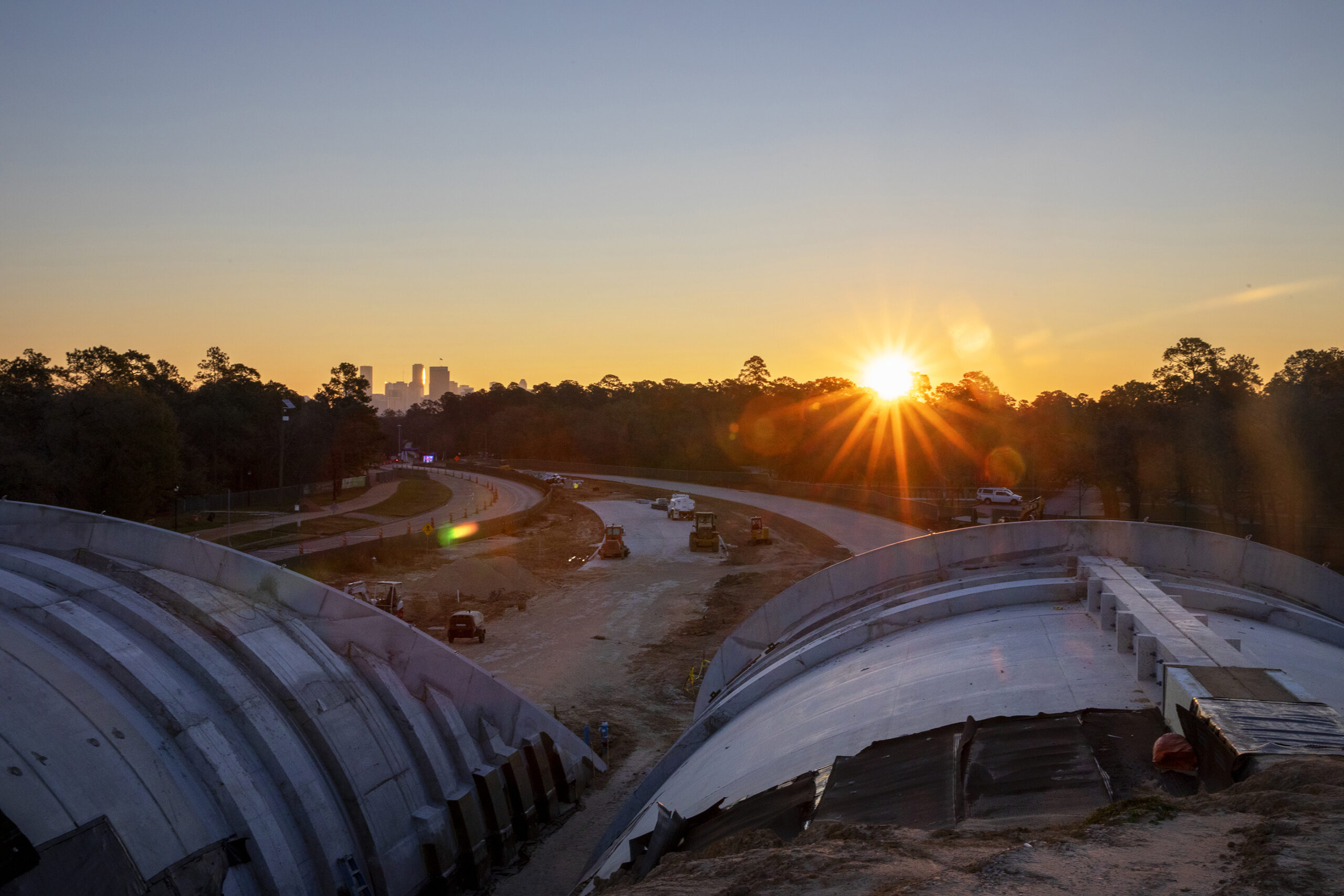
Eastbound Tunnel Opening Quick Facts
The Tunnels are for street traffic only.
The Tunnels will be well-lit by both natural and overhead lighting.
While Memorial Drive is two-way, the Tunnels are one-way traffic only.
The speed limit will remain 35mph through the tunnels, as they are still part of the larger project construction zone.
No stopping is allowed in the Tunnels.
The eastbound tunnel will be first to open, followed by the westbound tunnel approximately one month later.
During ongoing construction, traffic will continue to be limited to 2 lanes through the tunnels to maintain safety and access.
Memorial Drive Tunnel FAQs
Can people walk through the Tunnels?
No. The Memorial Drive Tunnels are for street traffic only. There will be a multi-modal commuter trail implemented to the south of the Tunnels for all other traffic and pedestrians.
Are the Tunnels dark? Do the Tunnels have lighting?
The Tunnels will be well lit. They are lit by both natural light during the day, as well as an overhead lighting strip that runs the length of each tunnel. These lights remain on 24 hours a day and respond to natural light conditions to maintain an optimal field of vision.
Can you stop in the Tunnels?
No. No stopping or parking is allowed in the Tunnels as they are for continuous traffic flow only. Designated pull-over locations are at the Picnic Lane intersection to the west and the Picnic Loop entrance to the east, at either end of the tunnels.
Are the Tunnels for two-way traffic?
No. While Memorial Drive is two-way, each tunnel is one-way traffic only, either westbound or eastbound.
How tall are the Tunnels?
Each tunnel is 25-feet tall by 54-feet wide.
Why is there a break between the Tunnels?
The break in the Tunnels allows for light filtration to the culvert beneath the road, which assists wildlife crossing. This break also allows for more air flow through the Tunnels, which is also aided by the Tunnels’ height.
